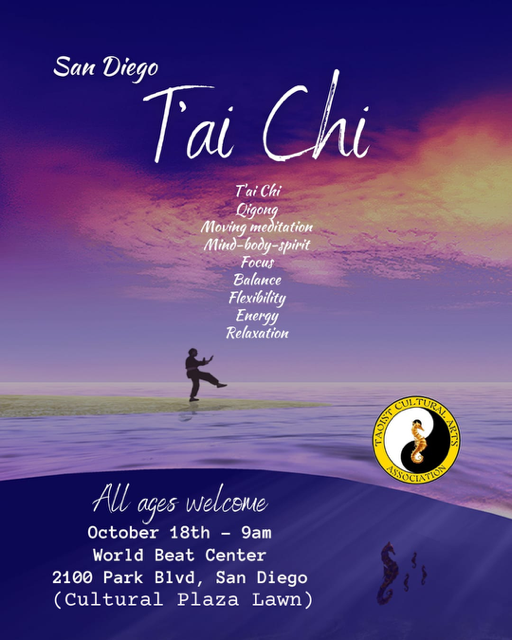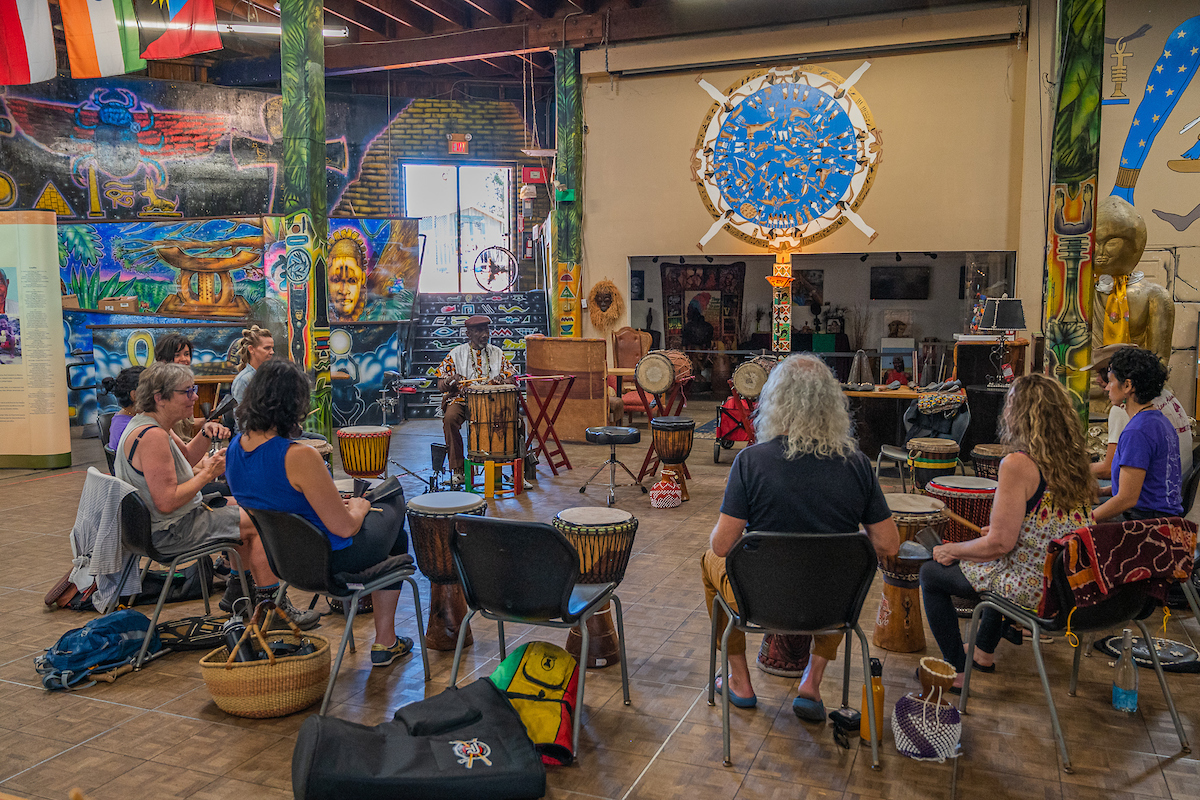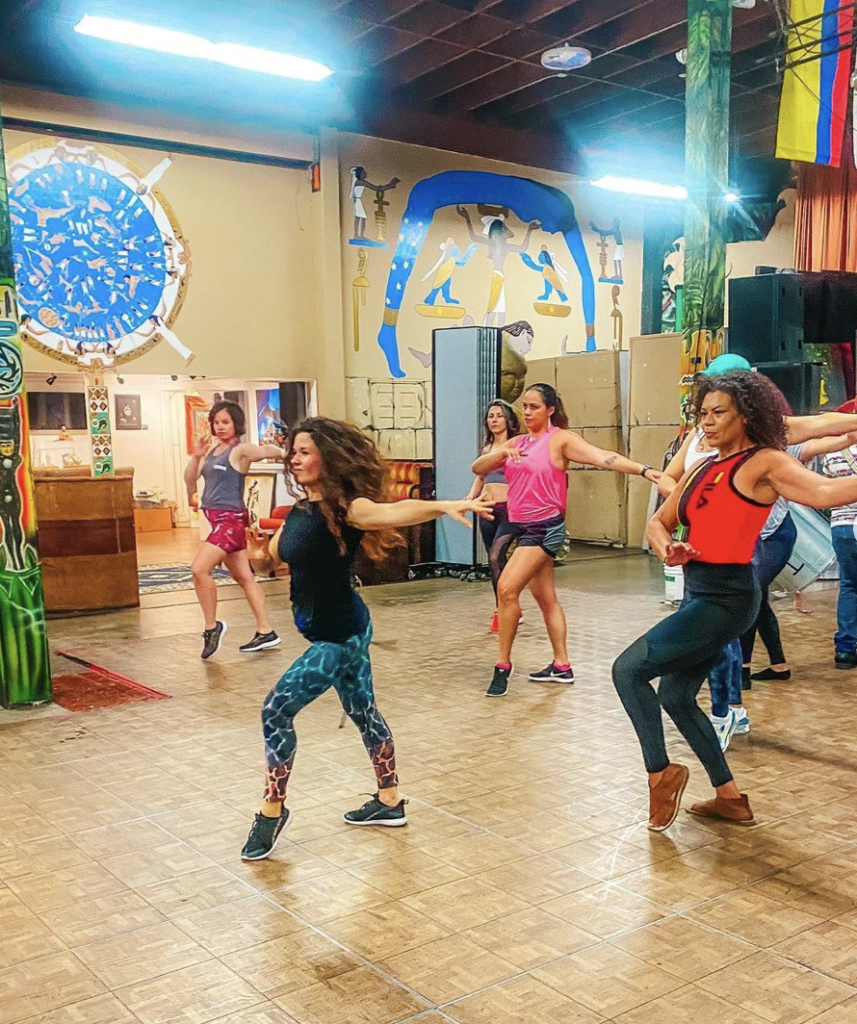To learn more about the classes click the class or plus sign to read more information including times and prices.
SUNDAY
MONDAY
Dumbek Drumming
Dumbek Drumming taught by Frank Lazzaro
6:00 PM – 7:00 PM
Frank has taught middle-eastern drumming for over 10 years, and has released an instructional CD. He is also the drummer for Middle-Earth Ensemble and performs regularly for belly dance shows. He has most recently developed a performance group made up of his dumbek drum students, called “Cairo Beats”.
Class Fee: $15
The goblet drum (also chalice drum, tarabuka, tarabaki, darbuka, derbake, debuka, doumbek, dumbec, dumbeg, dumbelek, tablah, toumperleki or zerbaghali, Arabic: دربوكة / ALA-LC: darbūkah) is a single head membranophone with a goblet shaped body used mostly in the Middle East, North Africa, South Asia, and Eastern Europe. The African djembe-wassolou is also a goblet membranophone.
The goblet drum may be played while held under one arm (usually the non-dominant arm) or by placing it sideways upon the lap (with the head towards the player’s knees) while seated. Some drums are also made with strap mounts to the drum may be slung over the shoulder, to facilitate playing while standing or dancing. It produces a resonant, low-sustain sound while played lightly with the fingertips and palm. Some players move their fists in and out of the bell to alter the tone. There are a variety of rhythms (see dumbek rhythms) that form the basis of the folkloric and modern music and dance styles of the Middle East.
All Levels Belly Dance Class
You’re invited to discover the power of accessing potent techniques to enhance your self-confidence and body positivity. Belly dance celebrates the movements of the body, emphasizing beauty and strength of diverse body types. This dance form encourages self-expression, allowing dancers to explore their creativity and emotions through graceful gestures, sensual movements, and captivating rhythms.
Eliza Moon will be your guide as you discover the artistry of this timeless form of dance.
No pre-registration required
Suggested Donation $15-20
7:00 PM – 8:00 PM
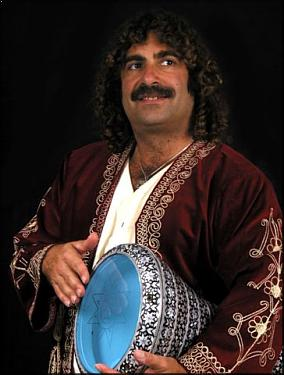

WEDNESDAY
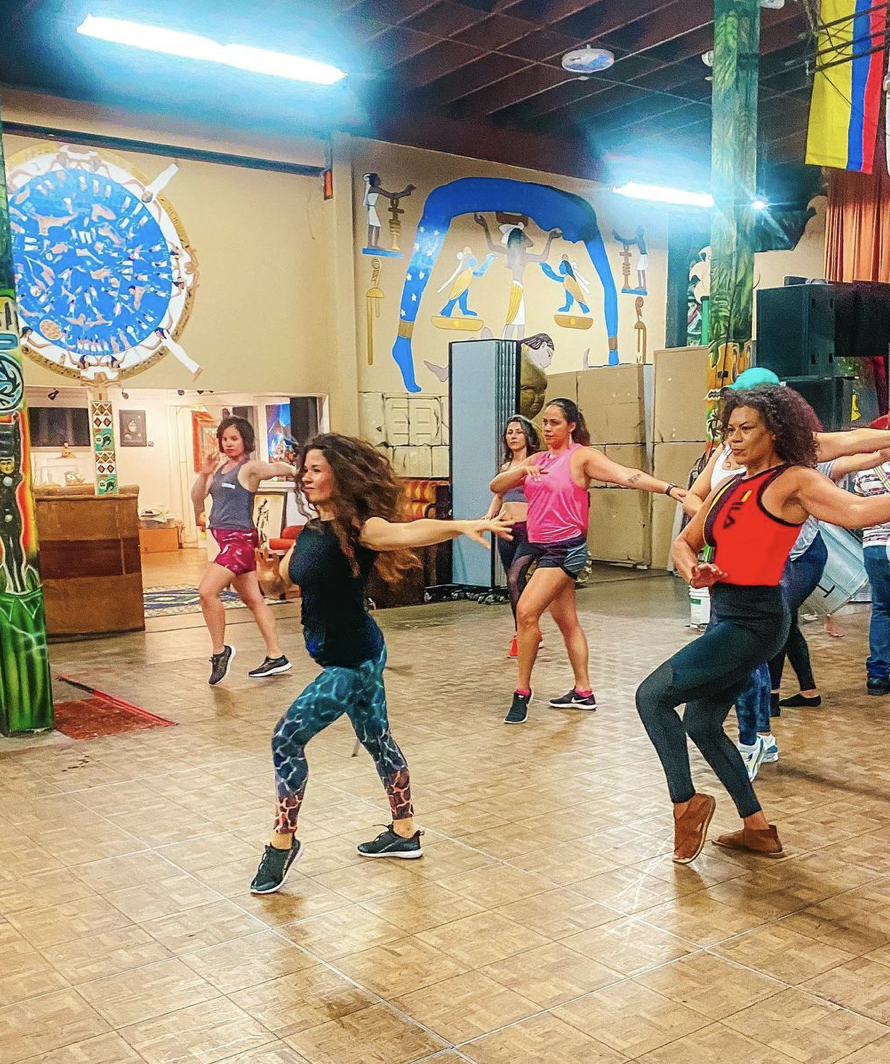
THURSDAY
San Diego Taiko Practice
Performance Group Practice for members of San Diego Taiko
8-10PM
Taiko (太鼓) are a broad range of Japanese percussion instruments. In Japanese, the term refers to any kind of drum, but outside Japan, it is used to refer to any of the various Japanese drums called wadaiko (和太鼓 “Japanese drums”). The process of constructing taiko varies between manufacturers, and preparation of both the drum body and skin can take several years depending on method.
The origin of the instruments is unclear, though there have been many suggestions. Historical accounts, of which the earliest date from 588 CE, note that young Japanese men traveled to Korea to study the kakko, a drum that originated in South China. This study and appropriation of Chinese instruments may have influenced the emergence of taiko. Certain court music styles, especially gigaku and gagaku, arrived in Japan through both Korea and China. In both traditions, dancers were accompanied by several instruments that included drums similar to taiko.
An important part of kata in taiko is keeping the body stabilized while performing, and can be accomplished by keeping a wide, low stance with the legs, with the left knee bent over the toes and keeping the right leg straight. It is important that the hips face the drum and the shoulders are relaxed.
Some groups in Japan, particularly those active in Tokyo, also emphasize the importance of the lively and spirited iki aesthetic.
The sticks for playing taiko are called bachi, and are made in various sizes and from different kinds of wood such as white oak, bamboo, and Japanese magnolia. Bachi are also held in a number of different styles. In kumi-daiko, it is common for a player to hold their sticks in a relaxed manner between the V-shape of the index finger and thumb, which points to the player.
San Diego Native American Church
Led by: Red Warrior Drum Group.
5-7PM
Meet outdoors, All are welcome
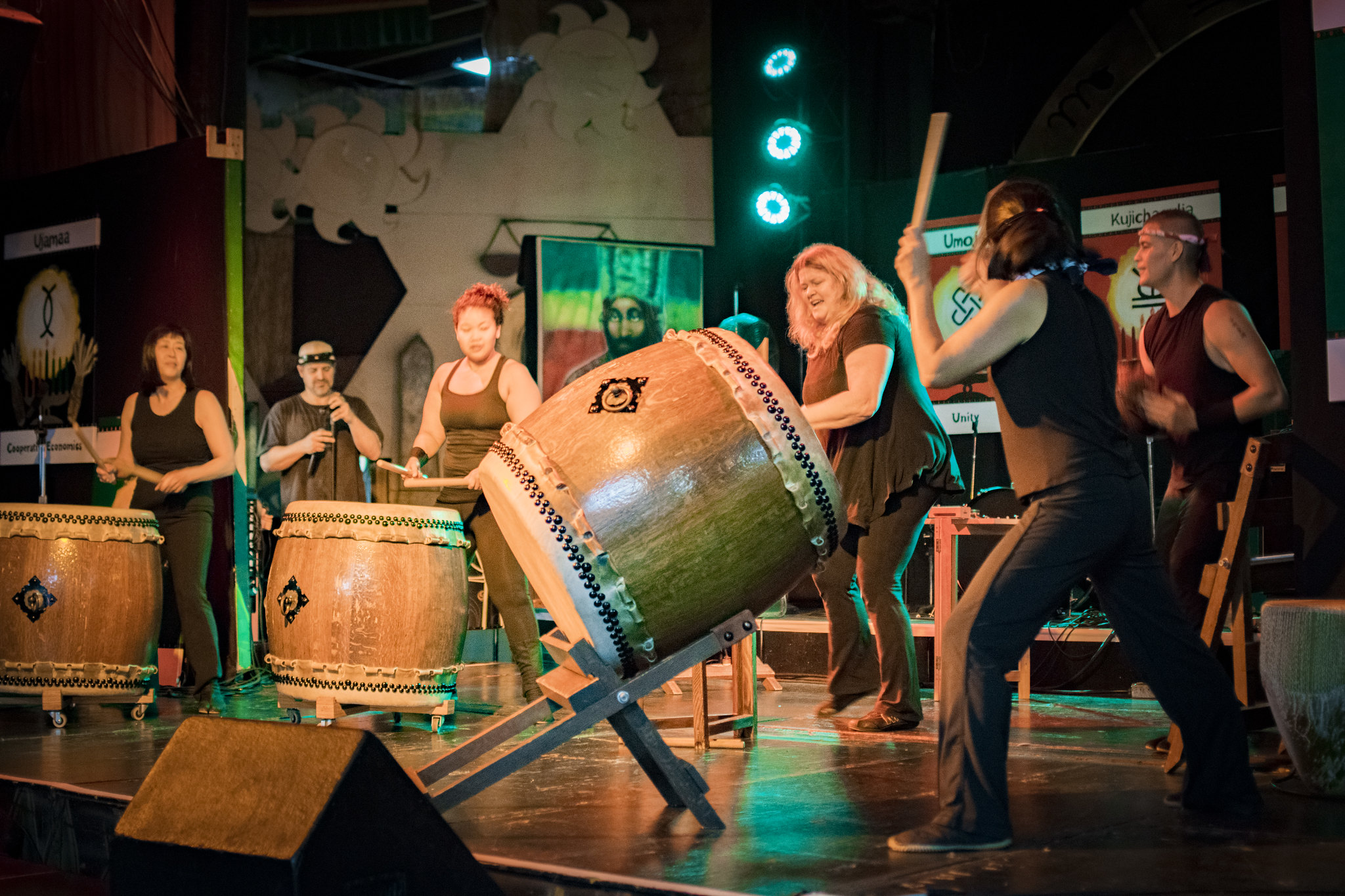
SATURDAY
Tai Chi
